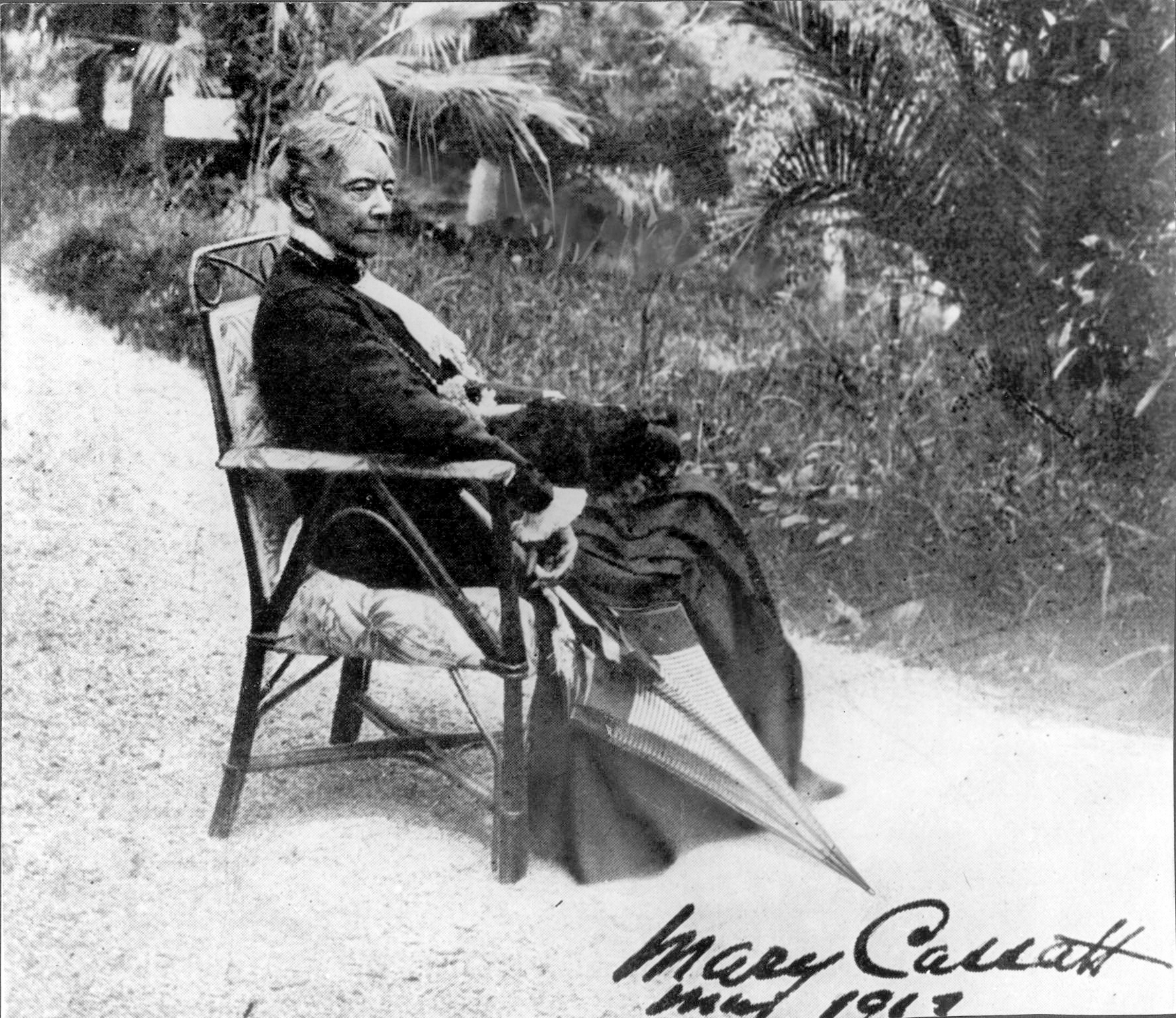

Queer Places:
10 Rue de Marignan, 75008 Paris, France
19 Rue Victor Massé, 75009 Paris, France
Château de Beaufresne, 60240 Le Mesnil-Théribus
 Mary
Stevenson Cassatt (May 22, 1844 – June 14, 1926)[1]
was an American painter and printmaker.
Mary
Stevenson Cassatt (May 22, 1844 – June 14, 1926)[1]
was an American painter and printmaker.
She was born in Allegheny City, Pennsylvania (now part of Pittsburgh's North Side), but lived much of her adult life in France, where she first befriended Edgar Degas and later exhibited among the Impressionists. Her sister was Lydia Cassatt. Cassatt often created images of the social and private lives of women, with particular emphasis on the intimate bonds between mothers and children.
Cassatt and her contemporaries enjoyed the wave of feminism that occurred in the 1840s, allowing them access to educational institutions at newly coed colleges and universities, such as Oberlin and the University of Michigan. Likewise, women's colleges such as Vassar, Smith and Wellesley opened their doors during this time. Cassat was an outspoken advocate for women's equality, campaigning with her friends for equal travel scholarships for students in the 1860s, and the right to vote in the 1910s.[14]
Louisine Havemeyer and her sister Addie joined Sophie Mapes Tolles and Emily Sartain in boarding at Mme. Del Sarte's (widow of François Del Sarte, famed teacher of the art of expression), and it was during this time that Emily Sartain introduced Louisine to Mary Cassatt.[2] During this time, Mary Cassatt took Louisine Havemeyer under her wing, becoming a mentor and encouraging her to make her first art acquisition, a pastel by Edgar Degas.[4] As time passed, particularly after Louisine married Henry O. Havemeyer, Cassatt became an advisor to the Havemeyers, helping to build their art collection and facilitating the working relationship which they would have with the Impressionist Artists. A lifelong friendship developed between Louisine Havemeyer and Mary Cassatt, who later made several pastels of Louisine and her children.
Mary Cassatt depicted the "New Woman" of the 19th century from the woman's perspective. As a successful, highly trained woman artist who never married, Cassatt—like Ellen Day Hale, Elizabeth Coffin, Elizabeth Nourse and Cecilia Beaux—personified the "New Woman".[44] She "initiated the profound beginnings in recreating the image of the 'new' women", drawn from the influence of her intelligent and active mother, Katherine Cassatt, who believed in educating women to be knowledgeable and socially active. She is depicted in Reading 'Le Figaro' (1878).[45]
In 1892 Lucy Bacon left for Paris to continue her studies[5] at the Académie Colarossi.[6] She then studied with Camille Pissarro, as advised by Mary Cassatt.[5]
In April 1892, Mary MacMonnies Low was approached by Sarah Tyson Hallowell, agent for Bertha Palmer, the prime mover behind the Woman's Building at the World's Columbian Exposition, Chicago, 1893, to paint one of the two mural tympana planned for the building's interior. The other was Modern Woman, by Mary Cassatt.
In 1894, journalist, art critic, and historian Gustave Geffroy named Berthe Morisot, Mary Cassatt, and Marie Bracquemond the three “grandes dames” of Impressionism.
Although Cassatt did not explicitly make political statements about women's rights in her work, her artistic portrayal of women was consistently done with dignity and the suggestion of a deeper, meaningful inner life.[14] Cassatt objected to being stereotyped as a "woman artist", she supported women's suffrage, and in 1915 showed eighteen works in an exhibition supporting the movement organised by Louisine Havemeyer, a committed and active feminist. The exhibition brought her into conflict with her sister-in-law Eugenie Carter Cassatt, who was anti-suffrage and who boycotted the show along with Philadelphia society in general. Cassatt responded by selling off her work that was otherwise destined for her heirs. In particular The Boating Party, thought to have been inspired by the birth of Eugenie's daughter Ellen Mary, was bought by the National Gallery, Washington DC.[46][47]
Cassatt died on June 14, 1926 at Château de Beaufresne, near Paris, and was buried in the family vault at Le Mesnil-Théribus, France.
My published books:
https://en.wikipedia.org/wiki/Mary_Cassatt